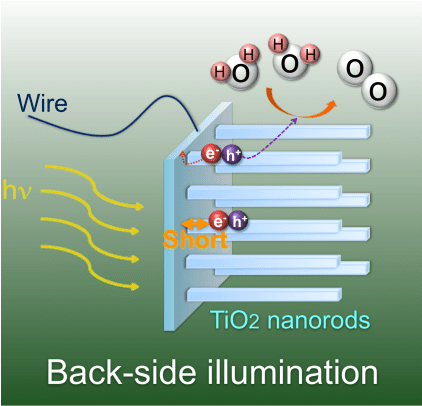
One-dimensional (1D) titanium dioxide (TiO2) nanostructures have been intensively studied for diverse applications in heterogeneous photocatalysis, photoelectrocatalysis and photovoltaics owing to their unique electronic properties, physical and chemical stability, nontoxicity, and, more importantly, their capability to generate photo-excited charge carriers under light irradiation. Unfortunately, the sluggish charge mobility and low carrier concentration of TiO2 has greatly impeded their overall performance.
In a recent progress report in ChemNanoMat from Prof. Bin Liu’s group at Nanyang Technological University, Singapore, the authors demonstrated a facile approach to improve electron transport in TiO2 nanorods (NRs) by introducing niobium (Nb) dopant into the lattice of TiO2. The TiO2-NRs doped with Nb were grown directly on fluorine doped tin oxide (FTO) substrates by a simple hydrothermal method and used directly as the photoanodes for water oxidation. The TiO2 NRs electrode doped with 0.25 % Nb showed a 65 % improvement in photocurrent as compared with the pristine TiO2 nanorod electrode. It was revealed that a small percentage of Nb doping does not influence the appearance of 1-D TiO2 NRs, but greatly improves the conductivity and charge transport. Furthermore, by simply changing the light illumination direction, the improvement of charge transport induced by Nb doping could be easily identified. This work not only demonstrates that the appropriate dopant can tailor the electronic properties of TiO2, but provides a simple and straightforward methodology to compare electron transport in semiconductor photoelectrodes without a need for delicate equipment.
This article is part of a special issue on Nanomaterials for Energy Conversion and Storage in ChemNanoMat ((link to: www.chemnanomat.org)). Click here ((link to: http://onlinelibrary.wiley.com/doi/10.1002/cnma.v2.7/issuetoc)) to see the other articles in the issue.

















